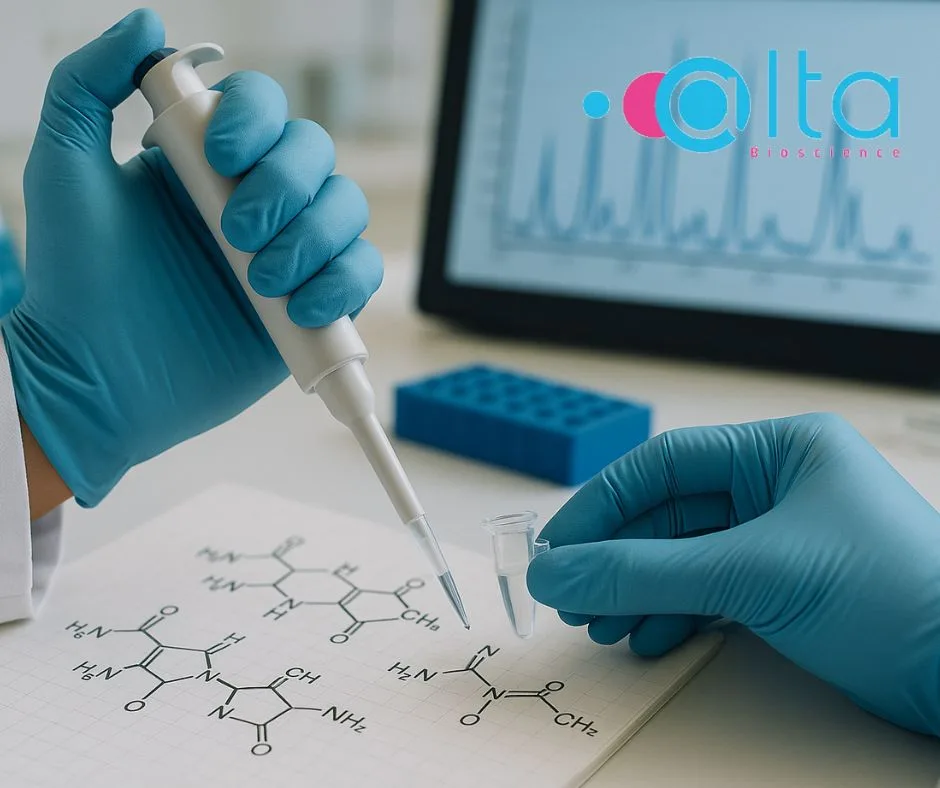What is protein sequencing? A beginner’s guide for researchers
Understanding protein structure is essential to modern life science research, and protein sequencing plays a foundational role in that effort. Whether you’re working in biotechnology, pharmaceuticals, or academic research, knowing exactly what your protein consists of and how it’s structured can inform everything from experimental design to therapeutic development. In regulated industries, guidelines such as ICH Q6B highlight protein sequencing, particularly N-terminal sequencing, as a key requirement for confirming the identity and consistency of biotechnological products.
In this guide, we’ll explain what protein sequencing and N-terminal sequencing are, introduce the core techniques involved, and highlight why they are fundamental in life sciences today.
What is the role of protein sequencing?
Protein sequencing is the process of determining the exact order of amino acids in a protein or peptide chain. Each protein is made up of a specific sequence of amino acids, which ultimately dictates its structure and function.
By identifying this sequence, researchers can:
- Confirm the identity of a protein
- Detect structural modifications
- Understand function or activity
- Ensure quality control in synthetic or recombinant proteins
Protein sequencing is a key analytical tool across proteomics, biotechnology, and drug development, offering insight into both natural and engineered proteins.
How is protein sequencing performed?
There are two primary methods used in modern protein sequencing:
Edman Degradation
This chemistry-based method sequentially removes and identifies the N-terminal amino acid of a protein. It’s highly accurate for short sequences and is a gold-standard technique for N-terminal sequencing.
- Ideal for purified proteins or peptides
- Can identify up to 30-50 amino acids
- Often used for quality control and identity confirmation
Mass Spectrometry
Mass spectrometry identifies peptide sequences by analysing the mass-to-charge ratio of ionised fragments. When combined with enzymatic digestions, it offers rapid and high-throughput sequencing for complex protein mixtures.
- Suitable for large proteins or protein mixtures
- Offers insights into post-translational modifications
- Often used in proteomics and biomarker discovery
Many labs use a combination of these methods to get the most accurate and comprehensive results.
Why is protein sequencing important in research?
Proteins are the workhorses of the cell, performing critical roles in signalling, structure, metabolism, and defence. Understanding the precise sequence of a protein is fundamental for several reasons:
- Functionality: A single amino acid change can alter protein behaviour or binding.
- Validation: Confirming the sequence of a synthesised or expressed protein ensures it matches the intended design.
- Regulatory compliance: For therapeutic proteins, regulators often require detailed sequence confirmation to verify consistency and purity. The ICH Q6B guidelines specifically recommend N-terminal sequencing as a method for confirming amino acid sequence and identifying recombinant proteins for biotechnological and biological products.
- Novel discovery: In proteomics, sequencing helps identify unknown proteins or post-translational modifications.
In short, knowing the amino acid sequence is often the first step toward understanding what a protein does and how it might be used.
Applications of protein sequencing in the lab
Researchers across disciplines rely on protein sequencing for a wide range of applications:
- Verifying custom peptide or protein synthesis
- Characterising therapeutic antibodies or enzymes
- Detecting mutations or truncations in expressed proteins
- Studying protein-protein or protein-ligand interactions
- Tracking structural changes or degradation products
Whether you are engineering a recombinant protein or validating a synthetic peptide, sequencing helps ensure reliability, reproducibility, and biological activity.
What is N-terminal sequencing?
N-terminal sequencing is a specific form of protein sequencing that focuses solely on identifying amino acids at the beginning (N-terminus) of a protein or peptide. The most common technique used for this purpose is Edman degradation, which sequentially removes one amino acid at a time from the N-terminal end and identifies it through chromatographic methods. This approach can identify 5-30 amino acids under ideal lab conditions. For solid/liquid protein samples, upwards of 30 may be achieved depending on purity. N-terminal sequencing is particularly useful for confirming the identity of purified proteins and verifying expression products. However, it requires that the N-terminus be free and unblocked, making it unsuitable for proteins that are chemically modified or naturally blocked at that end, e.g. by acetylation and glycosylation.
Get started with protein sequencing and N-terminal sequencing
At AltaBioscience, we are experts in providing accurate, high-quality N-terminal sequencing services using Edman degradation, trusted by academic labs and biotech companies alike. Our team can help you confirm the identity of your protein, troubleshoot expression issues, or validate your synthesis results with confidence.
If you are new to protein sequencing or unsure of what you need for your application, we’re here to support you.
Get in touch with our experts at AltaBioscience to discuss your project or learn more about our protein sequencing services.



